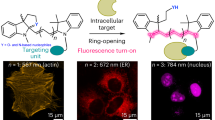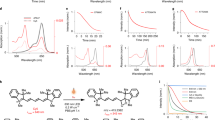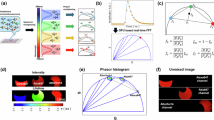Abstract
Many dyes fluoresce when they are irradiated with light of particular wavelengths. This is the basis of some specific microscopical staining techniques, especially in the field of immunology. Where activation depends on blue-violet light the quartz-iodine lamp is a useful and convenient source for fluorescence microscopy.
This is a preview of subscription content, access via your institution
Access options
Subscribe to this journal
Receive 51 print issues and online access
$199.00 per year
only $3.90 per issue
Buy this article
- Purchase on SpringerLink
- Instant access to full article PDF
Prices may be subject to local taxes which are calculated during checkout
Similar content being viewed by others
References
Bals, M. G., and Velculescu, V. G., Nature, 210, 1073 (1966).
Young, M. R., Quart. J. Micros. Sci., 102, 419 (1961).
Hicks, J. D., and Matthaei, E., J. Path. Bact., 70, 1 (1955).
Studer, F. J., and Van Beers, R. F., J. Opt. Soc. Amer., 54, 945 (1964).
Steiner, R. F., and Edelhoch, H., Chem. Revs., 62, 457 (1962).
Nairn, R. O., Fluorescent Protein Tracing (E. and S. Livingstone, Ltd., Edinburgh and London, 1962).
Author information
Authors and Affiliations
Rights and permissions
About this article
Cite this article
YOUNG, M., ARMSTRONG, J. Fluorescence Microscopy with the Quartz-Iodine Lamp. Nature 213, 649–650 (1967). https://doi.org/10.1038/213649a0
Issue date:
DOI: https://doi.org/10.1038/213649a0
This article is cited by
-
Quinacrine and acridine-R banding without a fluorescence microscope
Human Genetics (1978)
-
The distribution of deoxyribonucleic acid in the female gametophyte of Myosurus minimus
Histochemie (1968)



